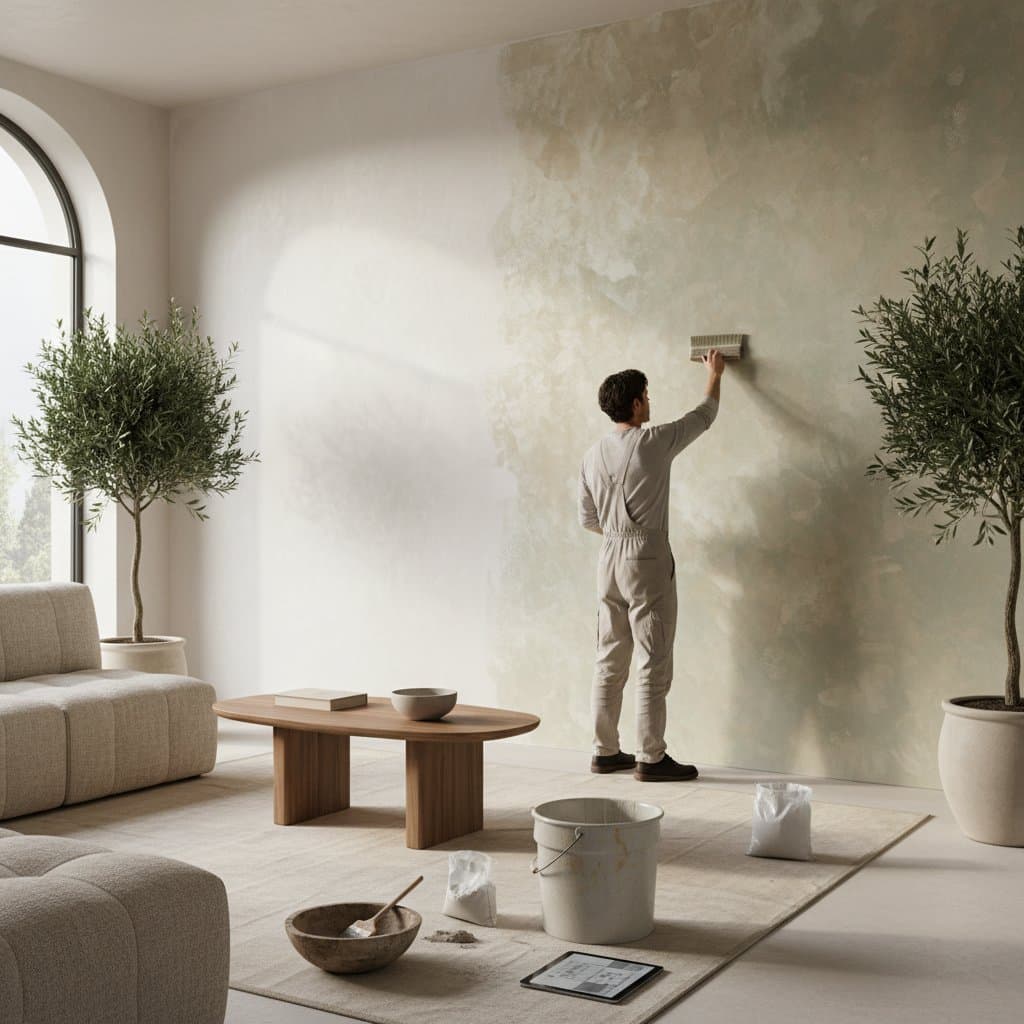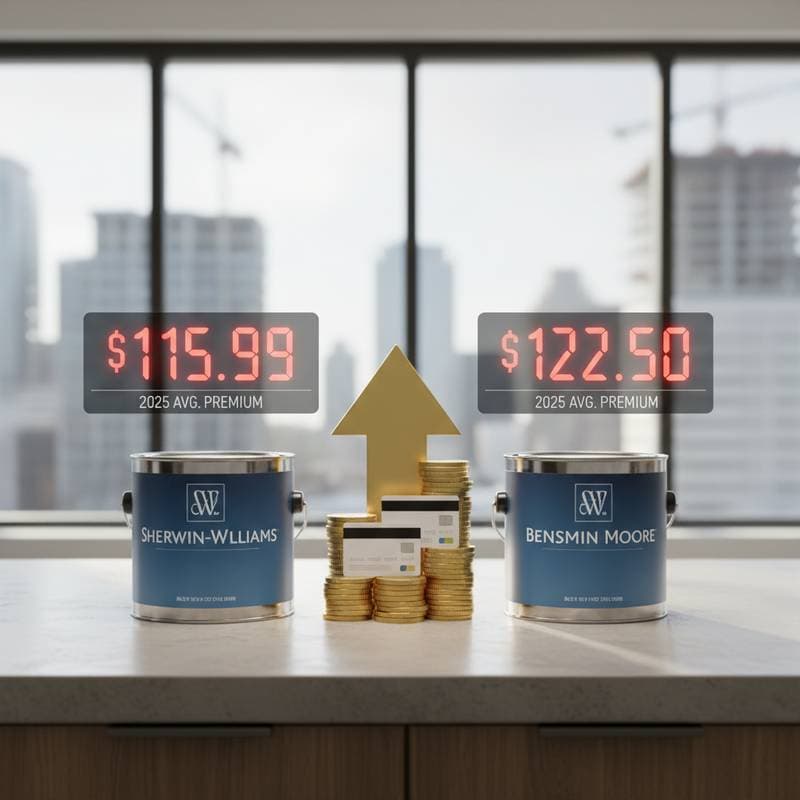Why Limewash Paint Costs Triple But Lasts Half as Long
Love a wall with character? That soft, cloudlike finish that looks lifted from an Italian villa or a centuries-old farmhouse? That magic usually comes from limewash paint. It’s earthy, breathable, and oh-so-beautiful. Yet homeowners and pros often ask the same question: why does limewash cost so much, and why doesn’t it last as long as regular paint? Let’s dig into what you’re really paying for, how it works, and when it’s absolutely worth every penny.
The Allure of Limewash
Limewash is not just paint. It’s a living finish. Made from crushed limestone that’s been heated, slaked with water, and aged into a high-pH paste, limewash creates a mineral bond with the surface it’s applied to. Unlike acrylic or latex paints that sit on top of walls, limewash seeps into porous materials like brick, plaster, and stone. That’s why it looks so natural and soft. It becomes part of the wall itself.
Designers love it for the movement and depth it creates. The color shifts gently with light and time. It’s matte but never flat. On camera, it reads as textured and dimensional, which is why it photographs like a dream on set or in print. NICE!
But here’s the catch. That same mineral, breathable quality that makes limewash gorgeous also limits its lifespan. Let’s unpack what drives both the cost and the wear rate.
Why Limewash Costs Triple
There are three big reasons limewash costs so much more than standard paint: materials, labor, and prep.
1. The Material Formula
Limewash is not churned out by the gallon in huge factories like latex paint. It’s a specialty product, often hand-blended with natural pigments. Some premium brands age their lime for extended periods to control pH levels and improve workability. This process takes time and care. The pigments themselves are mineral-based, not synthetic, which adds to cost but gives unmatched richness. You’re paying for chemistry, patience, and purity.
2. The Labor Factor
This is not a roll-and-go paint. Limewash has to be applied in thin, translucent coats, usually two to four. Each coat must dry completely before the next goes on. The surface has to stay damp during application, so painters often mist walls as they work. That slows everything down. It’s labor-intensive, and skilled hands matter. When applied correctly, limewash looks airy and layered. When rushed, it streaks and flakes. So the higher price often reflects the expertise needed.
3. The Prep Work
Limewash can only bond with porous surfaces. If your wall is sealed, glossy, or covered in synthetic paint, that finish has to come off. Sometimes the surface is primed with a mineral primer to encourage adhesion. This adds cost before the first brush stroke even happens. Good prep equals better results, but yes, it raises the price tag.
Why Limewash Lasts Half as Long
It feels unfair, right? You pay triple, yet it weathers faster. But that’s part of its charm and chemistry. Limewash is meant to breathe and age. It doesn’t trap moisture, which protects your walls from long-term damage, but it also means the finish slowly erodes under weather or repeated washing.
1. Exposure and Erosion
Limewash is porous. Rain, humidity, and sun all affect it. On exterior walls, it can fade or thin out in a few years, especially in harsh climates. On interiors, where conditions are stable, it can last longer but still softens over time. That’s not failure, that’s patina. The beauty of limewash is that it ages gracefully, like stone. But if you want a crisp, unchanging color, this isn’t your product.
2. Maintenance Cycles
Standard acrylic paint can last up to a decade before repainting. Limewash might need refreshing sooner, especially outdoors. The good news? Reapplying limewash is simple. It doesn’t require sanding or stripping. You just brush on a fresh coat, and it fuses with the old one. Maintenance becomes part of the aesthetic, not a chore.
The Value Equation
So why do people still choose it? Because limewash offers something no synthetic paint can: authentic, breathable beauty. It’s ideal for older homes with plaster or masonry that need to release moisture. It’s also eco-friendly, containing no plastics or harsh chemicals. If you care about sustainability, limewash wins big.
From an investment perspective, limewash can raise perceived value. It signals craftsmanship and taste. On high-end projects, it’s often used strategically—on feature walls, fireplaces, or exteriors where texture matters. You don’t need to coat every surface. Sometimes less is more.
Budget Breakdown: Three Spending Paths
Everyone deserves good design, and limewash can fit different budgets with smart planning!
Small Budget: DIY Limewash Look
Try a faux limewash using watered-down latex paint or a mineral-based glaze. Use a large brush and cross-hatch motions to create that layered feel. It won’t breathe like real limewash, but it gives a similar visual texture for a fraction of the cost. Perfect for renters or temporary spaces.
Mid Budget: Partial Limewash Upgrade
Focus on one statement wall or an accent area. Use authentic limewash from a trusted brand like Romabio or Portola Paints. Pair it with standard paint elsewhere. This keeps costs manageable and adds a true artisan touch.
High Budget: Full Limewash Finish
Go all in for a full room or exterior. Hire pros who know the technique. Expect higher material and labor costs but stunning results. The depth and movement can transform even a simple space into something magazine-worthy.
Behind the Scenes: What Works on Camera
From my time working on television sets, I’ve learned that limewash reads incredibly well under lights. It diffuses glare, softens shadows, and gives walls a natural gradient. On camera, flat latex can look lifeless, but limewash glows softly. If you plan to photograph your space or use it for visual content, it’s worth the extra investment.
Here’s a quick production tip! On camera, avoid pure white limewash. It can blow out under lighting. Choose a soft warm tone or pale gray for depth. That subtle pigment variation makes walls look alive, not sterile.
Product Innovation and Modern Tweaks
Limewash formulas have evolved. Some newer blends include natural binders or casein for better adhesion and longevity. These hybrids bridge the gap between traditional beauty and modern durability. They still breathe but resist weathering a bit longer. Always check the technical sheet before buying. Some are designed for interiors only, while others are rated for exterior use.
If you’re developing a product line or working on custom coatings, limewash opens creative possibilities. You can tint it, layer it, or polish it for different sheens. It’s also great for branding projects that celebrate heritage and sustainability. Love that!
Smart Application Tips
Applying limewash is part art, part science. Here’s how to get it right.
- Prep the Surface: Clean thoroughly and remove sealers or glossy paints. The wall must be porous.
- Dampen Before You Start: Limewash bonds better when the surface is slightly wet. A light mist is ideal.
- Use the Right Tools: A wide masonry brush gives a natural, streak-free finish. Rollers don’t work well here.
- Work in Thin Coats: Two to four coats are typical. Don’t overload the brush.
- Avoid Direct Sunlight During Application: It can make the lime dry too quickly, causing patchiness.
- Check for Even Absorption: If areas dry unevenly, mist lightly and blend.
When done right, the finish feels hand-crafted. Each stroke adds character.
Common Myths About Limewash
Let’s clear a few things up!
-
Myth: Limewash is only for old homes.
Truth: It’s beautiful in modern spaces too. The matte texture complements sleek lines and warm woods. -
Myth: It’s too delicate.
Truth: While it weathers faster, it’s also easy to refresh. Think of it as a living finish, not a permanent shell. -
Myth: It’s unsafe or outdated.
Truth: Modern limewash is completely safe once cured. It’s even naturally antibacterial due to its high pH. -
Myth: It comes in limited colors.
Truth: Pigment technology has expanded. You can now find hundreds of shades, from soft neutrals to deep charcoals and greens.
When Limewash Makes the Most Sense
- Historic Restorations: Matches original materials and lets old walls breathe.
- Moisture-Prone Walls: Ideal for plaster, brick, and stone that need vapor exchange.
- Design Statements: Adds depth and story to focal walls or exteriors.
- Eco Projects: Contains no VOCs and minimal processing.
If your goal is authenticity and atmosphere, this finish wins every time.
Pro Tips for Success
- Always test a small area first to see how it dries. The wet color can look darker than the final tone.
- Protect nearby surfaces. Limewash can etch glass or metal if left to dry.
- For interiors, consider a mineral sealer if you want easier cleaning later.
- If you’re layering colors, start light and glaze darker tones on top for depth.
- Keep leftover limewash covered but allow a bit of airflow. It keeps aging gracefully even in the bucket!



